|
Home |
|
US NC |
Weather:
|
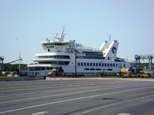

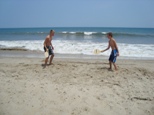




|
| Kill Devil Hills, NC, 2011 |
|
Interactive Map:
View Larger Map |
Summary:
When: July 18-23, 2011
Where: Hotel Days Inn & Suites Mariner in Kill Devil Hills between Kitty Hawk and Nags Head. By car: Approximately 400 mi one way. We used Garden State Parkway to Cape May, NJ, then ferry to Lewes, DE, then Rt.13 to Chesapeake Bay Bridge-Tunnel, and then Rt.168 and Rt.158 to Kill Devil Hills, NC. History and Geography: The Outer Banks (also known as OBX) is a 200-mile (320-km) long string of narrow barrier islands off the coast of North Carolina, beginning in the southeastern corner of Virginia Beach on the east coast of the United States. The Outer Banks is a major tourist destination and is known for its temperate climate, wide expanse of open beachfront, and water activities. The Cape Hatteras National Seashore has four campgrounds where visitors may camp. We planned to visit historical Roanoke Island with its Manteo as well. 



|
Route Map:
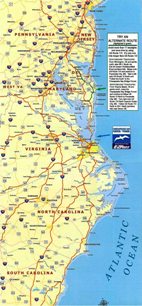
|


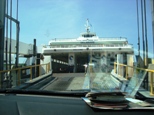
|
When we discussed our trip, two opportunities were considered: Rt. 95 - faster, but less picturesque, or using ferry from Cape May
and then Chesapeake Bay Bridge-Tunnel which is even shorter than Rt.95, but slower.
We choose the second way, as less boring, and did not regret about it. We left home at 8am and caught ferry at 11:00.
The weather was sunny, and we enjoyed the voyage across the Delaware Bay and even had time to take little lunch from our big resources.
The only problem was that Eugene lost screw from his fancy sunglasses. All efforts to fing it failed. But he assured us that can live without this screw.
In 80 minutes we landed in Lewes, DE. So far so good.
|
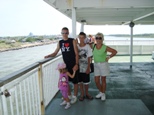
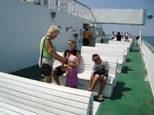
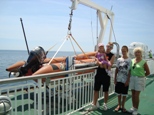
|
||


|
Following its opening on April 15, 1964, the Bridge-Tunnel was selected as "One of the Seven Engineering Wonders of the Modern World" in a worldwide competition that included more than one hundred major projects.
In addition, in 1965, it was distinguished as "The Outstanding Civil Engineering Achievement" by the American Society of Civil Engineers.
|
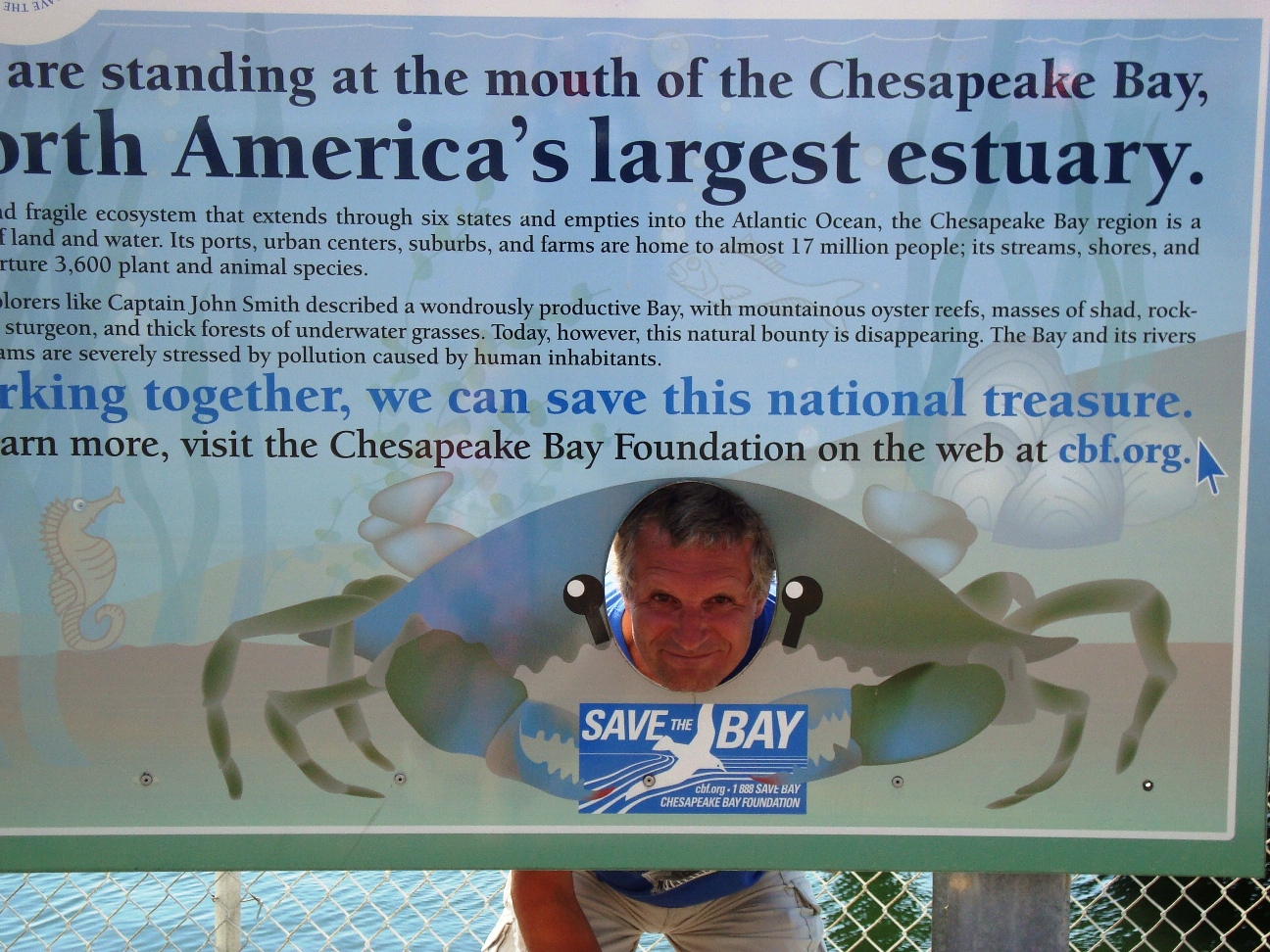

|
Atlantic Ocean | ||

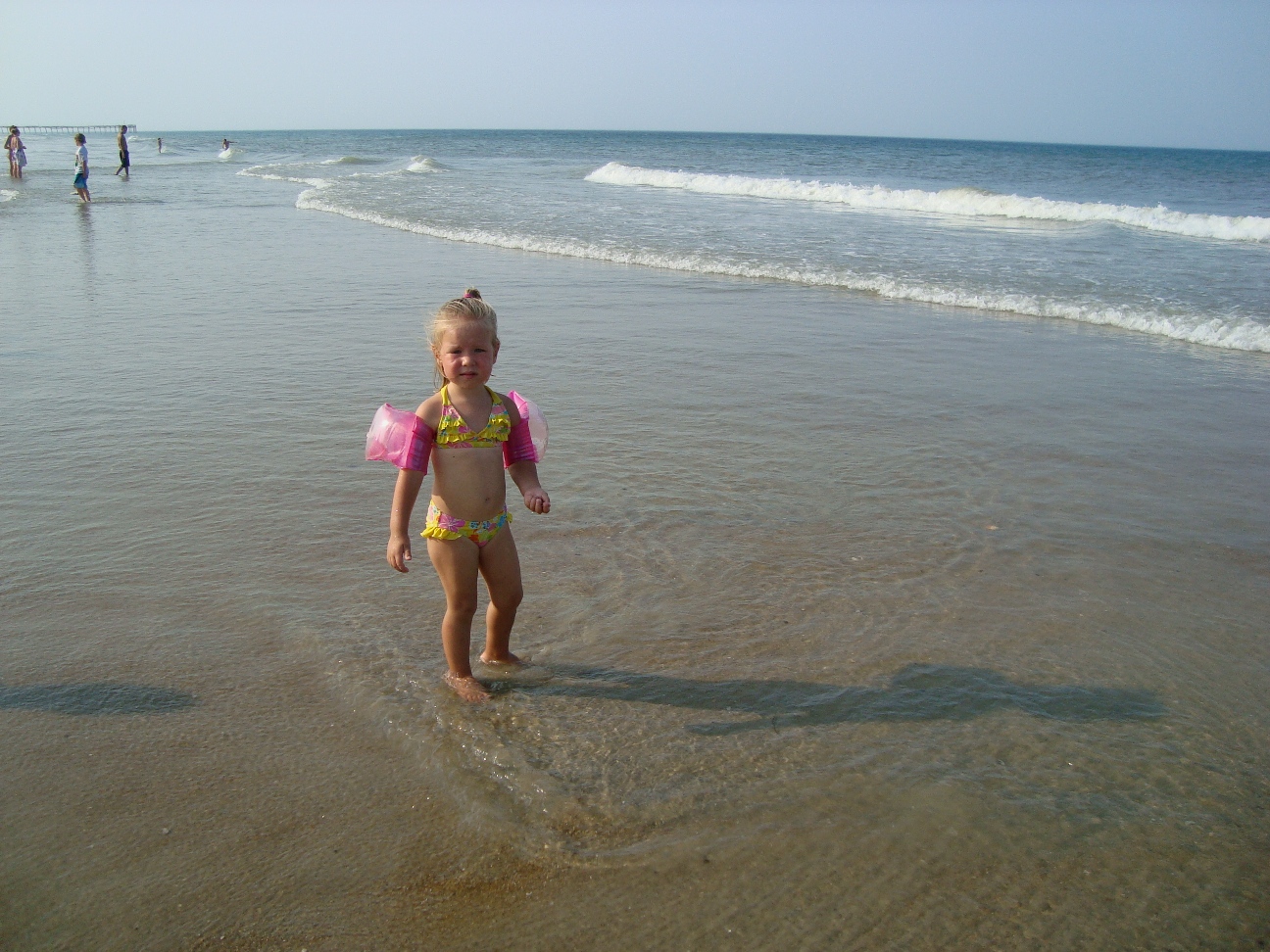


|
Beaches of Atlantic Ocean were our final goal, but when we reached it, the water appears very cold (probably around 60F).
Only strong men could endure to stay there more than 3 minutes. But we had couple of such men.
Other people just washed their feet and played beach tennis. As we have read later, this phenomenon is called upwelling
and happened when the wind is blowing parallel to the coastline.
Physical and mathematical explanation of this is rather complicated and required understanding of Coriolis effect.
So we gave Eugene our blessings to learn this theory at MIT, and moved to the pool.
|




|


|
One of the most mysterious disappearances in American history was that of "The Lost Colony of Roanoke".
In 1585, Sir Walter Raleigh brought over a party of English colonists, who settled on Roanoke Island, off the northeast coast of North Carolina.
This first group of colonists abandoned Roanoke in 1586 and returned to England.
A second group arrived in 1587 and established the first English settlement in new world with John White as a governor.
In that year the first white child of English parents was born on American soil.
Her name was Virginia Dare and she was White's granddaughter. By the time additional supplies were brought from England four years later, the entire group of settlers had disappeared.
What happened to Virginia Dare and members of "The Lost Colony" of Roanoke is unknown.
The Lost Colony, written by Pulitzer Prize-winning playwright Paul Green in 1937
and performed to commemorate the 117 English men, women, and children whose dream still lives on in this American original, is the longest running outdoor drama in the United States.
Its theater acts as a cultural focal point for much of the Outer Banks.
|
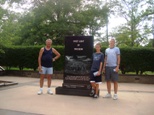

|


|
History, mystery and fantasy are combined in these special gardens, which are a memorial to the first English colonists who came to North America in 1584-1587 and 'walked away through the dark forest into history' as memorialized in Paul Greenís symphonic drama, 'The Lost Colony'.
For here and nowhere else, Sir Walter Raleigh made initial attempts to colonize the New World under Queen Elizabeth I. Truly this hallowed site is the birthplace of America.
The Elizabethan Gardens, located on this same site which the colonists first landed, is full of history and beauty in this tranquil setting on the shores of Roanoke Island.
Founded and supported by the Garden Club of North Carolina, Inc. and featured in many landscape books and calendars, The Elizabethan Gardens is one of the finest examples of gardens of this period.
Truly, it stands out as the crown jewel of Roanoke Island.
|

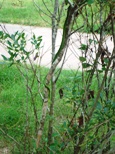
|



|
The Wright brothers' first flight in a powered, heavier-than-air vehicle took place on the Outer Banks on December 17, 1903, at Kill Devil Hills near the seafront town of Kitty Hawk.
The Wright Brothers National Monument commemorates the historic flights, and First Flight Airport is a small, general-aviation airfield located there.
A 60-foot (18 m) granite monument, dedicated in 1932, is perched atop 90-foot-tall (27 m) Kill Devil Hill, commemorating the achievement of the Wright brothers.
They conducted many of their glider tests on the massive shifting dune that was later stabilized to form Kill Devil Hill.
Inscribed in capital letters along the base of the memorial tower is the phrase "In commemoration of the conquest of the air by the brothers Wilbur and Orville Wright conceived by genius achieved by dauntless resolution and unconquerable faith."
Atop the tower is a marine beacon, similar to one found in a lighthouse. Eugene took responsibility to drive us to and around this Memorial and gets credit for this.
|



|



|
Jockey's Ridge Park contains three unique ecosystems: the Roanoke Sound, the dune system, and the maritime forest.
Often when it rains, water collects near the bottom of the dunes creating a temporary pond, known as a vernal pool. Few fauna can be seen around the dunes, although some types of flora, such as tall grass, may be readily identified closer to the bottom of the dunes.
There are nature trails, a sound access, and picnic areas. Viewing the sunset over the sound, bird watching, and kite-flying are among the favorite activities of visitors.
The desert-like environment can be quite harsh and temperatures can reach 110 degrees; the sand can be 30 degrees hotter.
The park's visitor center features a museum about the cultural and natural history of the park, including sand dunes, plants and wildlife, weather, pirates and local maritime history. A gift shop run by the Friends of Jockey's Ridge is also located in the visitor center. The ridge area is accessed either from the back deck of the visitor center or the parking lot via a 350-foot-long (110 m) boardwalk. Kitty Hawk Kites, the world's largest hang gliding school, also provides concessionaire hang gliding lessons in the park. Their office is located directly behind the park's visitor center. We watched several unsuccessful attemts of school graduates to take off, and decided not to take their lessons. Instead we tried to build our own kite on the beach, but the results of test-flight were similar: about 8 seconds of flight. Then we remembered that first Wright Brothers' Flight lasts only 12 seconds and decided that it is not bad for us at all. |



|
Dunes and Sound at Jockey's Ridge State Park | ||



|
Jockey's Ridge is the tallest living natural sand dune system in the Eastern United States.
Its height varies from 80 to 100 feet, depending on weather conditions. You may see live picture of dunes here.
When Wright brothers came here to test their plane, Kill Devil Hills look the same way.
Shifting maritime winds blow billions of grains of sand in different directions, constantly changing both the shape and size of the dune. Why doesn't the sand blow away? In the winter, the winds usually blow out of the northeast and in the summer out of the southwest; therefore, the sand is constantly blown back and forth. Also, the dunes' tiny sand particles hold moisture throughout the year. The sun dries the top layer of sand. But, just below this layer, the sand stays wet. The high winds from northeasters blow the top, dry layer off, but the wet layer below stays put. The Roanoke Sound is a shallow, brackish, estuarine body of water that separates Bodie Island from Roanoke Island. It remains shallow due to the same forces that created the ridge: winds blow sand from the dune area into the sound. It is able to act as a hatchery for many types of both freshwater and saltwater fishes due to its mostly calm waters. Croakers, shrimp, striped burrfish, pipefish, blue crabs, and seahorses have all been documented near the park. Many types of shorebirds are also present along the sound. Ospreys are one of the more fascinating sights during warmer months in the area. This is the perfect place for windsurfing, paragliding and kitesurfing. |




|
At home in Days Inn & Suites Mariner | ||


|
To compare with the cold ocean pool's water was very nice and we often played waterpolo there. Julia enjoyed pool a lot under Valentina's supervision.




|


|
|
Design and pictures made by George&Valentina. |
You are
|
 To send your impressions about this page to WebMaster click on @-icon
To send your impressions about this page to WebMaster click on @-icon
|
|
Home |